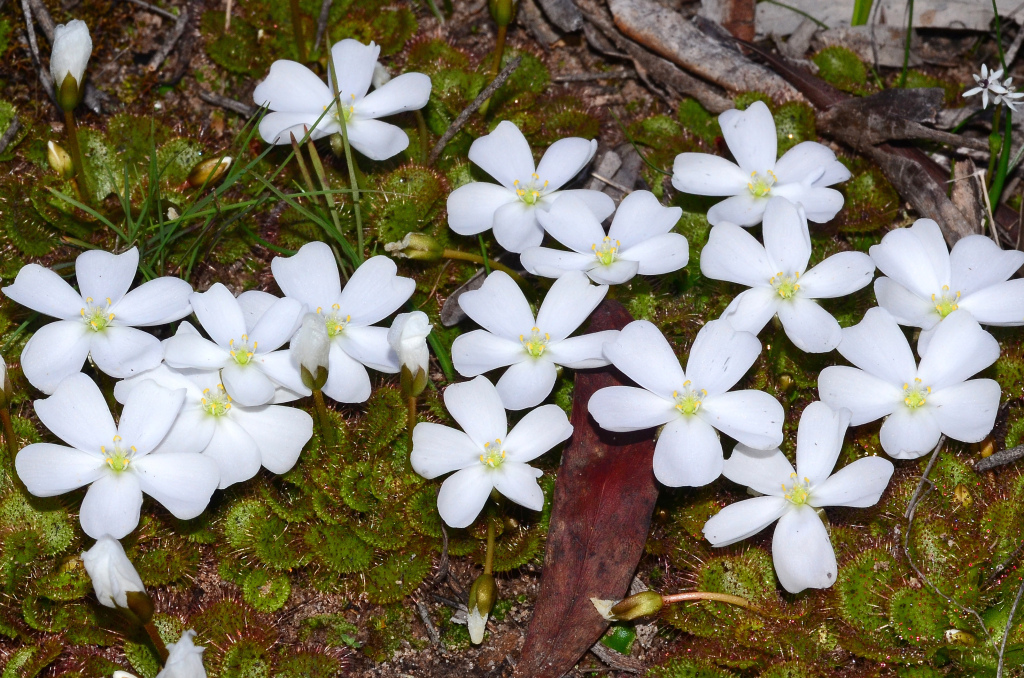Drosera aberrans
(Lowrie & Carlquist) Lowrie & ConranStoloniferous perennial. Tuber ellipsoid to globose. Stem reduced. Stipules absent. Leaves in flat basal rosette, spathulate, sessile, (10–)13–25 mm long. Inflorescence axillary, reduced, racemose, 1-c. 6-flowered (appearing to be a cluster of several single flowers), up to c. 30 mm long; bracts absent; pedicels 15–22 mm long; sepals 5, elliptic, 4.8–7 mm long, glabrous; margin entire; apex subacute, often with an occasional tooth; petals 5, more or less obovate, 8–12 mm long; apex truncate to shallowly notched, white or pink; styles 3, each divided into many filiform segments. Flowers Jun.–Oct.
LoM, MuM, Wim, GleP, VVP, VRiv, GipP, OtP, WaP, Gold, CVU, GGr, DunT, NIS, HSF, HNF, OtR, Strz, VAlp. Also SA, NSW. On clay-rich soils or sandy soils overlying clays in herbfields, heath-land and open-forest.
Suspected as poisonous to livestock.
Treated as Drosera whittakeri in the previous Flora of Victoria treatment (Conn 1996). Drosera whittakeri only occurs in South Australia, and is distinguished from D. aberrans by the absence of stolons and greater number of flowers.
 Spinning
Spinning
